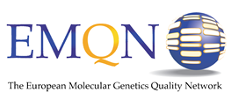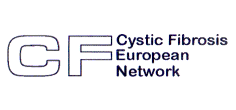Genomic prophylaxis
Personalised medicine
Personalised medicine is a field of medicine that enables the optimal use of traditional therapeutic methods in the treatment of diseases, as well as the use of a new generation of drugs and therapies. It is a completely new approach breaking with the previous practice of treating all patients with a given condition with the same method or drug and standardised dose. This avoids unnecessary treatment costs and eliminates the risk of choosing the wrong or ineffective therapy. The method that will enable an individualised approach to a patient is the analysis of the patient's genome.

The genome is the basic information on the structure and function of our organism, recorded in a chemical form. The carrier of genetic information of every living organism is deoxyribonucleic acid (DNA). Genetic information is encoded in the order in which the four units (nucleotides) that make up the DNA chain - the letters of the genetic code: A, C, G, T - follow one another.
DNA has the structure of a so-called double helix, which can be compared to a ladder. Each step consists of a pair of nucleotides. There are more than 3 billion such pairs in the human genome. The human genome written down in a text form would take up 400 volumes of an encyclopaedia. Our genetic material is packed into 23 pairs of chromosomes: we receive one chromosome of each pair from each parent. The human genome consists of approximately 23 000 genes - regions of DNA containing information that allows the organism to produce building and regulatory proteins.
The sequence (i.e. the order of nucleotides) in DNA is transcribed into a sequence of nucleotides in so-called messenger RNA, which in turn is transcribed into a sequence of protein-building units - amino acids. The genetic code is a set of rules that determines how the sequence of nucleotides is translated into a sequence of amino acids in a protein.
Mutations and diseases
Mutations, or changes in DNA, are caused by errors in copying the genetic material (DNA) needed to make new cells, and by exposure to chemicals and radiation. Mutations inherited from our parents and those that occur during embryonic development can cause developmental defects or metabolic disorders. Mutations that arise later in the cells that make up our bodies can lead to cancer.
In recessively inherited diseases (e.g. cystic fibrosis, phenylketonuria), problems arise when both copies of the gene (from both parents) are damaged.
A separate group are dominantly inherited diseases (e.g. Huntington's disease, congenital brittle bone disease), for which the presence of a pathogenic mutation in one copy of the gene is sufficient. We know of about 6,500 genes whose damage can cause disease, and about 7,000 genetic diseases. Only a few genetic diseases can be treated. Enzyme replacement therapy is available for five so-called storage diseases (e.g. mucopolysaccharidosis type VI, Gaucher and Pompe diseases). Several metabolic diseases are treated with elimination diets. In a few cases of genetic disorders a gene therapy exists. For most genetic diseases, however, prevention and symptomatic treatment are the only options. In the near future, it will be possible to repair the damage in the entire genome using gene therapy or genome editing.
For damage repair to become possible, it is necessary to diagnose errors in the human genome. Genome analysis makes it possible to identify the molecular defects underlying many diseases. The detection of such mutations provides the opportunity to verify the diagnosis or suspicion of a disease.
Mutations in the human genome can be identified using a variety of diagnostic approaches. The most important of these are genetic tests that identify a specific mutation, DNA microarrays (chips) and DNA sequencing. Genetic testing that detects only well-defined mutations is becoming a method of the past as the least accurate and most limited method. An extension of genetic testing technology is microarray technology. Fragments of the genome with a known sequence are bound to a plate called a chip, which in turn is flooded with a solution containing the patient's DNA. If the subject's DNA is identical to the control sequence, a reaction takes place in which a light signal is generated, while if the subject's DNA differs from the control sequence, no light signal is generated, signalling the presence of a mutation. Microarrays can only detect 2 million genetic variants out of tens of millions of possible ones. This method is still inaccurate and only allows the detection of variants previously identified by sequencing, but not the full characterisation of an individual genome.
DNA sequencing, or reading the sequence of letters in a DNA chain, is a method that, until recently, made it possible to decipher approx. 1 000 DNA letters in a single reaction. It is now giving way to the latest technique with the widest spectrum of genetic errors to be analysed - Next-Generation Sequencing (NGS), which allows all possible variations to be detected. With this technology, billions of letters of genetic information - the entire genome sequence - can be read in a single experiment. Such a test is called Whole-Genome Sequencing (WGS).
Individualised therapy
Reading the genome, however, is only the beginning of the problem. The information contained in the genome acquires diagnostic significance only after a thorough analysis by qualified, certified professionals based on the latest information from genetic databases. On the basis of the genome analysis, the doctor will be able to recommend an individual therapy or appropriate prophylaxis for the patient.
The variability of our genomes is the basis for an individual response to medicines, such as painkillers, antidepressants, atherosclerosis drugs or drugs used to treat cancer. Already today, knowledge of the sequence of selected fragments of a patient's genome is used in the choice of treatment, for example in oncology. Knowing the entire genome of each of us will be the basis for rational drug selection throughout our lives. This is only the beginning of the problem. The information contained in the genome acquires diagnostic significance only after a thorough analysis by qualified, certified professionals based on the latest information from genetic databases. On the basis of the genome analysis, the doctor will be able to recommend an individual therapy or appropriate prophylaxis for the patient.








